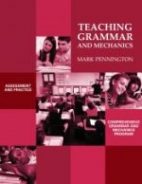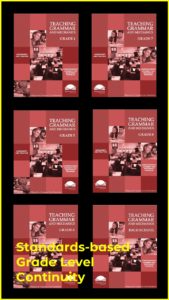Selective Implementation of the Common Core
Cherry Picking Which Common Core Standards to Teach
In a related article I focused on the “cherry picking” of certain Common Core State Standards for English Language Arts & Literacy in History/Social Studies, Science, and Technical Subjects Standards by district curriculum specialists and teachers. I said that cherry picking can mean picking the easiest fruit on the tree, picking the best fruit on the tree, or picking just the fruit on the tree that we want and ignoring the rest. Straight off wikipedia, so you know that it’s the truth.
I suggested that the latter use of “cherry picking” would seem to apply to many districts and teachers as they have begun implementing the Common Core ELA/Reading Standards. Of course we all tend to teach what we know, but we also teach what we want to believe. The former I could classify as unconscious cherry picking. The latter is conscious cherry picking and has a hidden agenda.
We Tend to Teach What We Know: Unconscious Cherry Picking
Elementary and middle-high school English-language Arts teachers are generally well-trained and/or interested in teaching reading and writing—less so in grammar, usage, mechanics, spelling, vocabulary acquisition, listening, and speaking content and skills. After all, how many grammar classes are required for teachers earning their elementary or secondary English credentials? 0. Thus, when districts and teachers began implementing the Common Core State Standards in 2011 and 2012, district curriculum specialists and teachers initially gravitated toward the known and put the unknown on the backburner. In my school district we’ve had plenty of Common Core reading and writing trainings, but not one moment of training dedicated to the Language, Speaking, or Listening Standards. Conscious cherry picking—but perhaps a reasonable approach, given the paramount importance of reading and writing to literacy.
However, having acclimated themselves and their students to the Common Core Reading: Literature, Reading: Informational Text, and Writing Strands over the last four years, many teachers are now ready to teach the well-balanced approach intended by the Common Core writers—including all of the Strands.
Indeed, these other Strands are trending. As an educational publisher I use my blog to promote my books. I have to keep track of search results and key search terms to drive traffic to my blog. My blog drives traffic to my website and sells my books. As states “raced to the top” to adopt the Common Core State Standards in 2011, googling “Common Core Reading Standards” and “Common Core Writing Standards” got the most search results in the field of English-language Arts/Reading. Googling “Common Core Language Standards” and “Common Core Speaking and Listening Standards” got negligible amounts of search results.
I just googled the same search terms and found 42,500,000 search results for “Common Core Reading Standards” and 27,200,00 for “Common Core Writing Standards.” However, I was shocked to see the increase in search results for “Common Core Language Standards.” 40,600,000 results! Teachers may have initially gravitated toward what they know, but now they are shifting focus to what they want to know.
So why aren’t district trainings responding to this need? Why aren’t many district curricular specialists and university professors promoting the Language, Speaking, and Listening Strands? Why aren’t budgetary allocations being funneled into all of the Common Core ELA/Reading Strands?
We Also Teach What We Want to Believe: Conscious Cherry Picking
Many state, county, and district curriculum specialists, as well as university professors don’t want teachers to implement all of the Common Core State Standards for English Language Arts & Literacy in History/Social Studies, Science, and Technical Subjects.
Specifically, many of these “movers and shakers” were inculcated in the 1980s whole language philosophy of implicit whole to part learning. Age is a factor in educational decision-making. The educational “movers and shakers” are now in their 50s or 60s. And all of us, to a certain extent, are products of our times. These educational decision-makers were taught that explicit part to whole language instruction was useless or even counter-productive. Educational research studies which confirmed this philosophy were trumpeted; studies which pointed in the other direction were brushed aside. Unlike the unconscious cherry picking, this was conscious cherry picking.
Choosing to make selective choices among competing evidence, so as to emphasize those results that support a given position, while ignoring or dismissing any findings that do not support it, is a practice known as “cherry picking” and is a hallmark of poor science or pseudo-science.
— Richard Somerville, Testimony before the US House of Representatives Committee on Energy and Commerce Subcommittee on Energy and Power, March 8, 2011.
In terms of instructional approaches to literacy, this meant that explicit part to whole phonics, spelling patterns and rules, structured approaches to writing, explicit vocabulary strategies, grammar, usage, and mechanics practice were disparaged and even forbidden in some states.
At the height of the whole language movement fanaticism in California, principals were even instructed to confiscate spelling workbooks from their teachers.
By the late 1990s most school districts and teachers had abandoned the whole language philosophy in reading. Failing test scores demanded the switch to explicit phonics and spelling instruction. However, because standardized tests emphasized reading and math, the whole language philosophy maintained its influence on grammar, usage, mechanics, spelling, vocabulary acquisition, speaking, and listening content and skill development.
For many educational “movers and shakers,” this hidden agenda remains.
Many district curriculum specialists are simply not providing training and budget allocations for the other Language Strand and Speaking and Listening Strand precisely because they don’t want to emphasize the explicit part to whole instruction called for in the Common Core State ELA/Reading Standards. To fail to choose is a choice.
Additionally, neither the PARCC and Smarter Balanced Common Core assessments focus on grammar, usage, mechanics, spelling, vocabulary, speaking, or listening Standards. So even for the less philosophically-driven and more pragmatic teach-to-the-test district decision-makers, it’s reading and writing that remains the focus.
However, younger teachers are beginning to experience some instructional cognitive dissonance. Although still force-fed much of the whole language philosophy at district level trainings and in university coursework, they see things differently in their classrooms. They don’t believe that their students will “catch on” to grammar or spelling by just writing a lot or through the editing process or via simplistic mini lessons or via writing “warm ups” such as Daily Oral Language. They don’t believe that students will acquire necessary academic vocabulary solely through reading. In other words, younger teachers tend to believe in explicit, not implicit, instruction. What is “taught” works better than what is “caught.” And retired teachers who gutted out the whole language movement of the 1980s and kept passing out their phonics, grammar, spelling, and mechanics “drill and kill” worksheets are smiling. And so are many of their former students.
*****
I’m Mark Pennington, author of the full-year interactive grammar notebooks, grammar literacy centers, and the traditional grade-level 4, 5, 6, 7, 8 and high school Teaching Grammar and Mechanics programs. Teaching Grammar and Mechanics includes 56 (64 for high school) interactive language conventions lessons, designed for twice-per-week direct instruction in the grade-level grammar, usage, and mechanics standards. The scripted lessons (perfect for the grammatically-challenged teacher) are formatted for classroom display. Standards review, definitions and examples, practice and error analysis, simple sentence diagrams, mentor texts with writing applications, and formative assessments are woven into every 25-minute lesson. The program also includes the Diagnostic Grammar, Usage, and Mechanics Assessments with corresponding worksheets to help students catch up, while they keep up with grade-level, standards-aligned instruction.
Or why not get the value-priced Grammar, Mechanics, Spelling, and Vocabulary (Teaching the Language Strand) grades 4, 5, 6, 7, and 8 BUNDLES? These grade-level programs include both teacher’s guide and student workbooks and are designed to help you teach all the Common Core Anchor Standards for Language. In addition to the Teaching Grammar and Mechanics program, each BUNDLE provides weekly spelling pattern tests and accompanying spelling sort worksheets (L.2), 56 language application opener worksheets (L.3), and 56 vocabulary worksheets with multiple-meaning words, Greek and Latin word parts, figures of speech, word relationships with context clue practice, connotations, and four square academic language practice (L.4, 5, and 6). Comprehensive biweekly unit tests measure recognition, understanding, and application of the grammar, mechanics, and vocabulary components.
The program also has the resources to meet the needs of diverse learners. Diagnostic grammar, usage, mechanics, and spelling assessments provide the data to enable teachers to individualize instruction with targeted worksheets. Each remedial worksheet (over 200 per program) includes independent practice and a brief formative assessment.
Check out the brief introductory video and enter DISCOUNT CODE 3716 at check-out for 10% off this value-priced program. We do sell print versions of the teacher’s guide and student workbooks. Contact mark@penningtonpublishing.com for pricing. Read what teachers are saying about this comprehensive program:
The most comprehensive and easy to teach grammar, mechanics, spelling, and vocabulary program. I’m teaching all of the grade-level standards and remediating previous grade-level standards. The no-prep and minimal correction design of this program really respects a teacher’s time. At last, I’m teaching an integrated program–not a hodge-podge collection of DOL grammar, spelling and vocabulary lists, and assorted worksheets. I see measurable progress with both my grade-level and intervention students. BTW… I love the scripted lessons!
─Julie Villenueve
Grammar, Mechanics, Spelling, and Vocabulary Grades 4-8 ProgramsThe author of this article, Mark Pennington, has written the assessment-based Grammar, Mechanics, Spelling, and Vocabulary Grades 4-8 programs to teach the Common Core grammar, usage, mechanics, spelling, and vocabulary Standards. Diagnostic assessments and targeted worksheets help your students catch up while they keep up with rigorous grade-level direct instruction.





 I hear the same two comments at English-language arts conferences all the time:
I hear the same two comments at English-language arts conferences all the time: 
